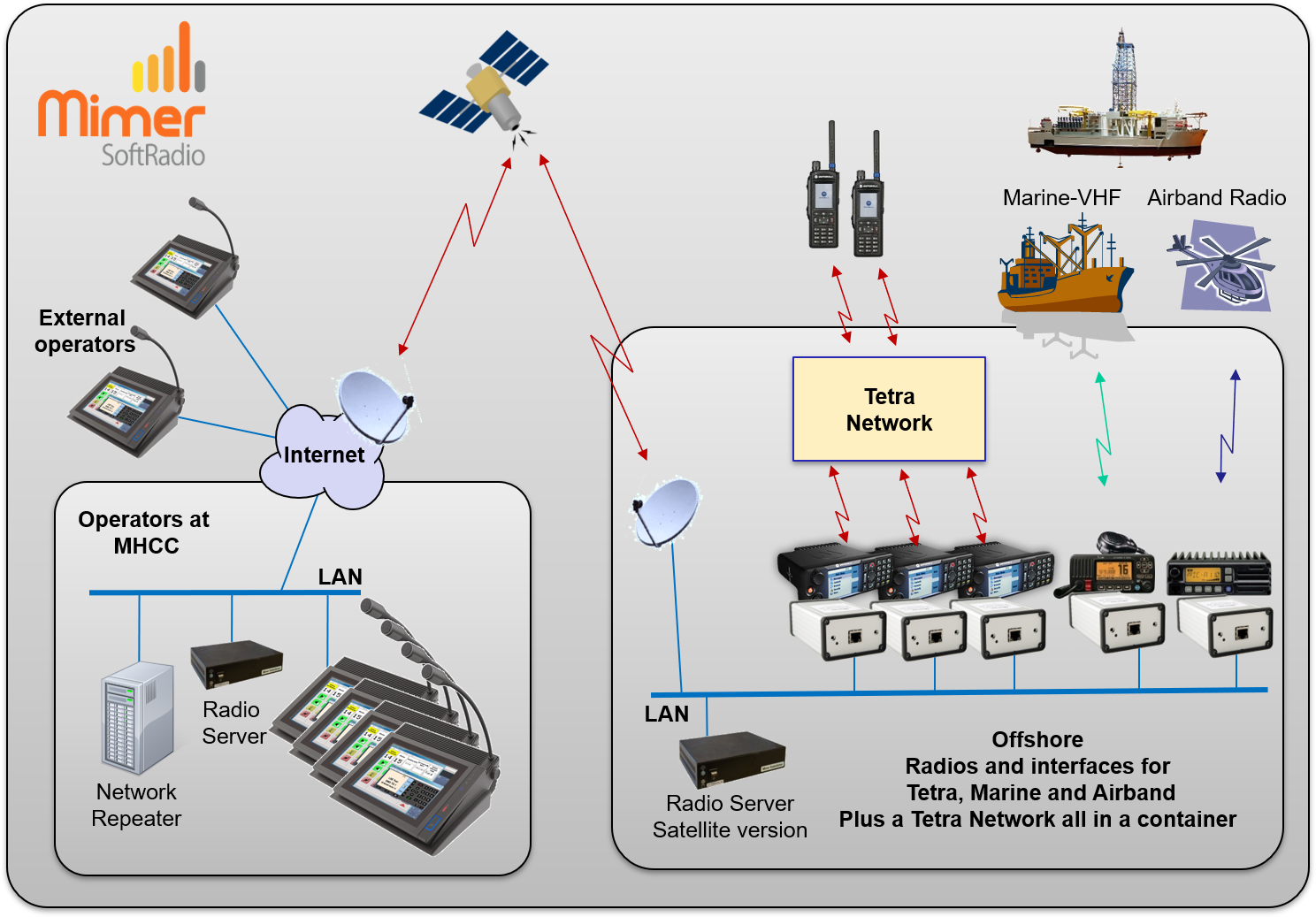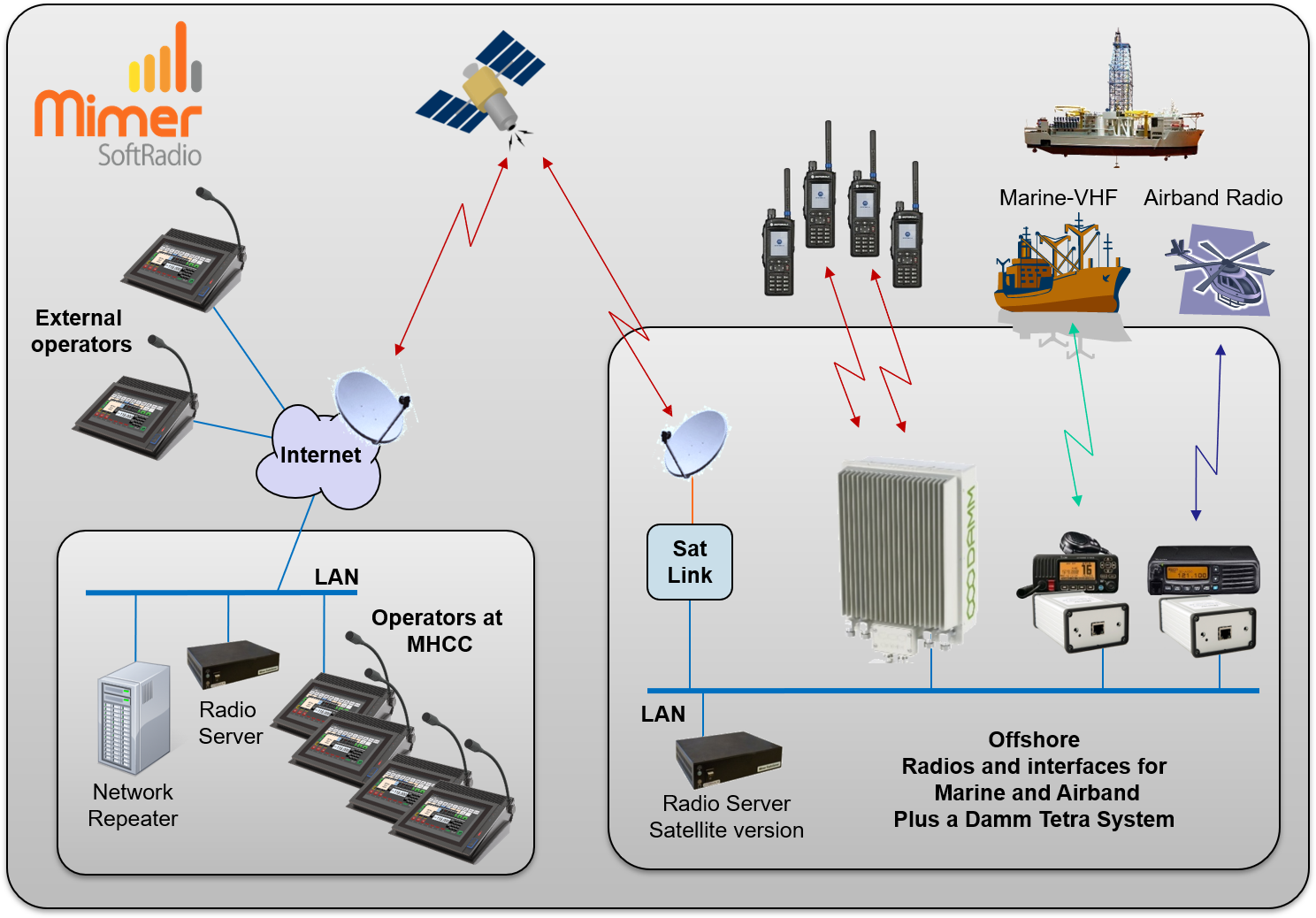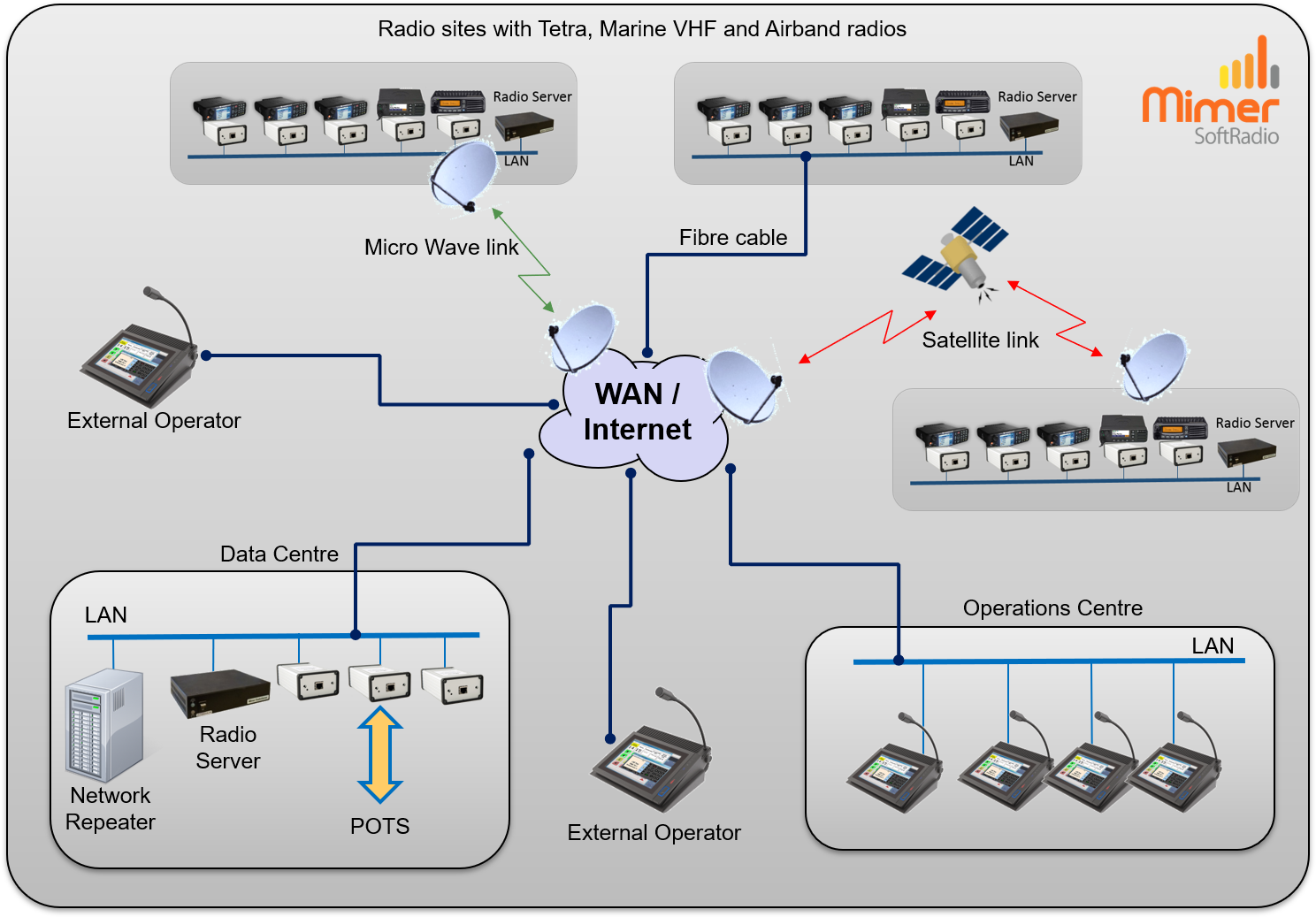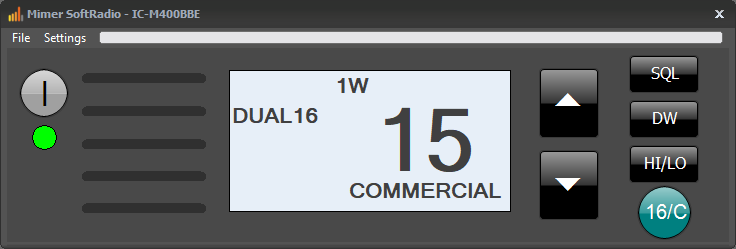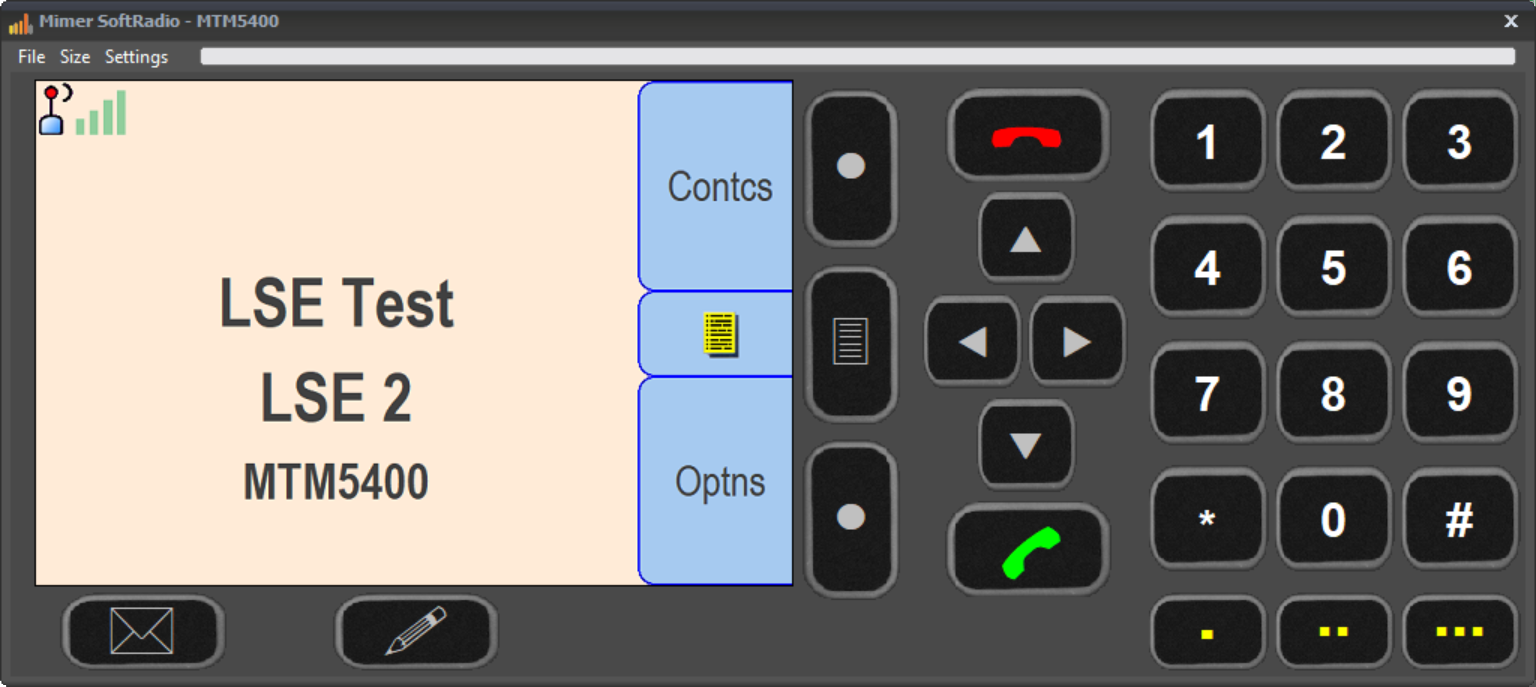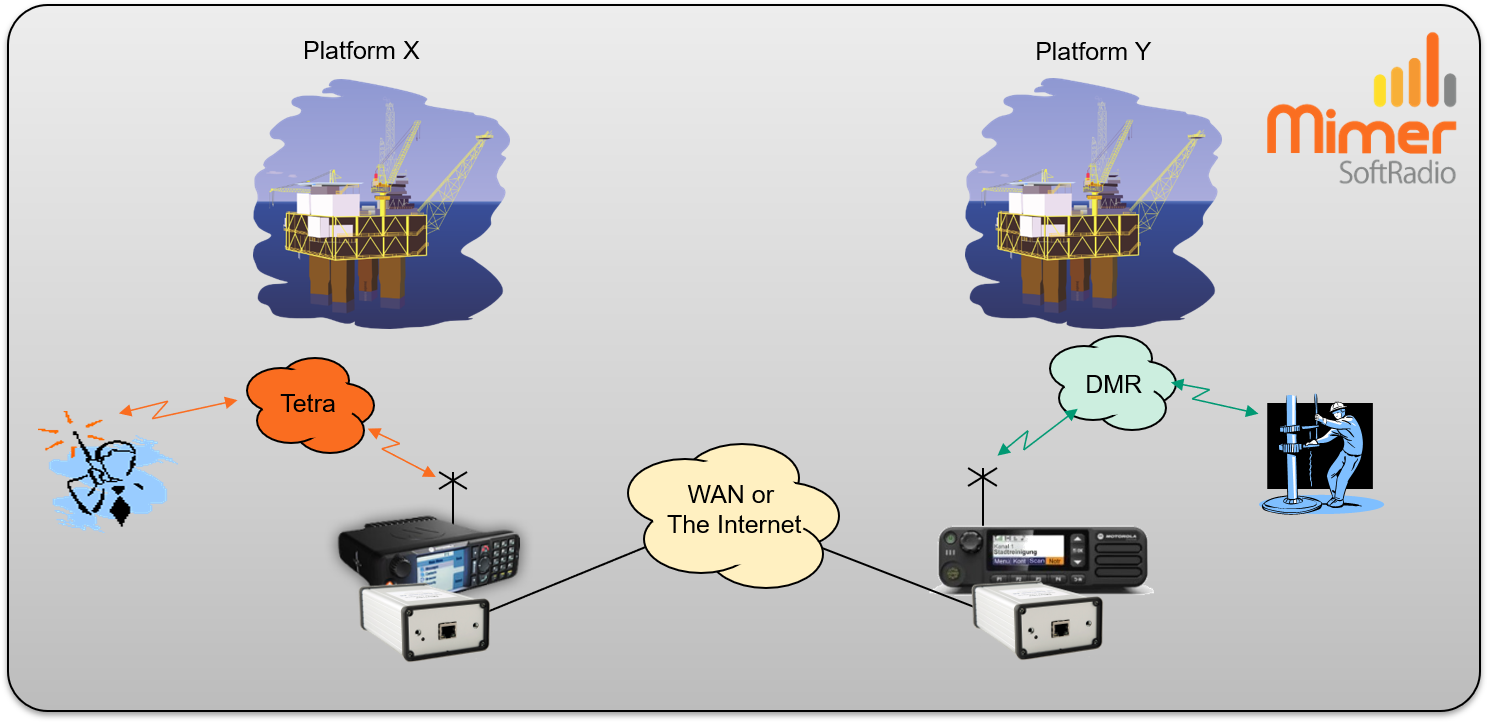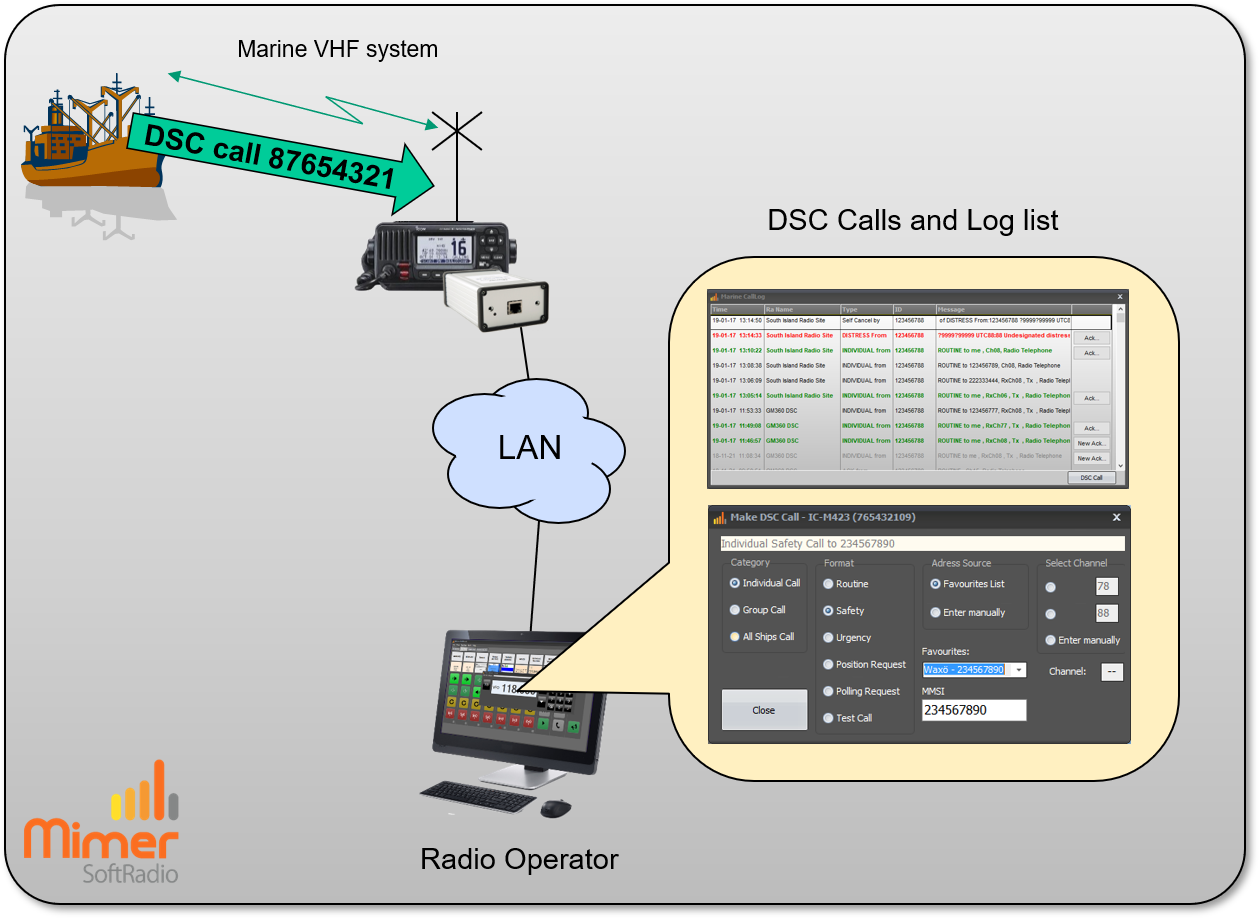Mimer SoftRadio - Offshore Systems
Offshore on oil rigs, wind farms etc. there is a large need to communicate at all times. Mimer SoftRadio will secure that the Marine Coordinators can talk to the workers both from an offshore operator central and from an onshore operator central.
Please also see the Marine Systems page and the other pages with system examples.
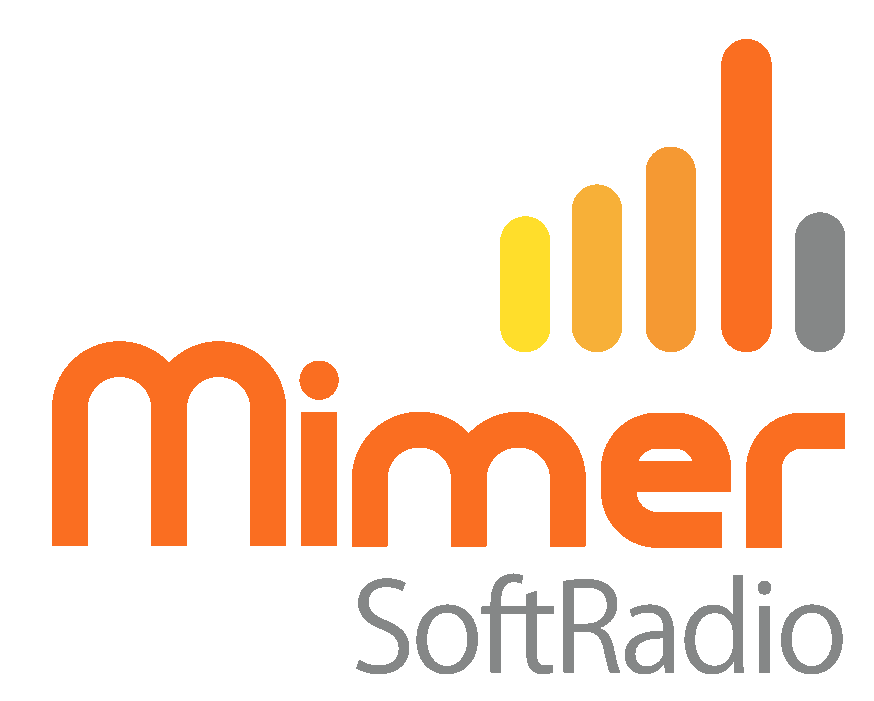
Offshore Wind farms
When building a wind power farm in the middle of the sea there is need for a lot of communication. You need to talk to ships on the marine VHF band, you need to talk to helicopters on the Airband VHF system and you also need to talk to all the technical personnel through a local radio system.
When the windfarm is built, and running, you still need all the communication if service personnel shall be able to travel there and work there.
While all the radio equipment needs to be out “in the middle of the ocean” near the wind farm and the workers, the dispatchers prefer to sit nice and warm in a Marine Call Centre onshore.
Systems of this type are in use all over the North Sea, at wind farm companies like Ørstedt and Vattenfall.
Build up
During build up all the radios needed are usually installed in a container at the foot of one of the wind turbines. When the wind park is ready they are moved or exchanged for radios that are mounted inside the foot of one wind turbine tower.
At first electric power comes from generators and solar panels, but after a while the wind generated electricity can take over.
Remote control
The radios are all remote controlled through Mimer SoftRadio over an IP connection.
In the beginning there is mostly only satellite available for IP connection, but when everything is finished there is a fibre cable leading out to the wind farm and IP is no longer a problem.
IP over satellite requires some extra equipment to handle the latency and jitter that the link gives you. We have special designed satellite mode RadioServers for this purpose.
Also other equipment, apart from radios, like PA speakers and fog horn signals can be remote controlled.
Radio Systems
The MCC can handle all types of radios as well as phones from the same dispatch console. They can also handle more than one wind farm.
The system can be set up so that in the daytime several dispatchers work with different wind farms, but in the night time when traffic is low, one dispatcher takes over all radio traffic.
Marine Radio
This is mostly one or two fixed radios offshore. The radios can use a fixed channel or have channel change capability remotely.
With Sailor marine radios or with Mimer MarineCalls also DSC signalling is possible. Either setup with one MMSI for each dispatcher or setup with one MMSI for each radio site.
Tetra or DMR Radio
Mostly this is done through a number of fixed donor radios out at sea. The dispatchers can make talkgroup calls, private calls and use text messaging.
If the system is a Damm Tetraflex then a connection can be made directly into the core of the system without using donor radios.
Offshore Oil and Gas rigs
The needs on an Oil or Gas rig is similar to that of an offshore wind farm. Many different radio systems, often some old analogue radio plus the marine and airband.
A difference between the rigs and the wind farms is that they have a control room offshore that needs to use all the communication. In order to save on personnel offshore there is also a need to remote all radios from an onshore centre, and sometimes from another rig nearby.
All of this can be handled with SoftRadio. You can have a mix of local and remote dispatchers. You can also have an intercom function between the dispatchers.
This type of system is used on many rigs, at companies like Equinor and BP.
ATEX radios
This is mostly an intrincically safe environment meaning that special hand radios needs to be used. These are available for the standard analogue and digital radio systems, but hard to find for Marine VHF and impossible to find for Airband use.
With the help of a cross patch in the SoftRadio system, or a fixed cross link, a user standing on the deck with an ATEX approved handportable, can still talk to an incoming helicopter.
PA and PAGA systems
Connecting the PA/PAGA system to the SoftRadio system means that a radio dispatcher can make anouncements directly from the same dispatch console as for the radio.
Using the CrossPatch function, a radio call can be patched to the PA system.
Using the GroupSend function, a call can be simultaneus on radio and PA.
Bridging two platforms
The radio systems on two platforms can be bridged using one or more SoftLine links. Conncting two radios back-to-back so that audio comming in on one radio will be retransmitted on the othe radio, on the other platform.
The system can work cross system types. Read more on the SoftLine page.
Offshore rig with dispatchers both on and offshore. Many different radio types.
The radio systems on two platforms bridged by using SoftLine. Read more here.
Helpful SoftRadio Options
- Intercom
With Intercom between the operator panels the operators can communicate between each other without transmitting on a radio.
The intercom function can also be used together with PA systems.
Read more here. - DSC
For calling other ships and also to get calls from other ships and coastal stations.
Read more here. - CrossPatch
With the CrossPatch option radio channels and also phone calls can be patched together.
Read more here. - Phone connection
The operator can handle phone calls from the same software as the radio calls.
Read more here. - PA and FogHorn
A special interface can be installed offshore that the operator can remote control. This will give a PA speaker, fog horn signalling and a ambient listening microphone.
Read more here.

